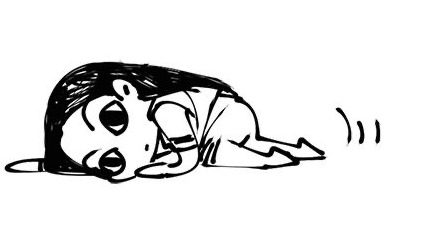#13 Using Adjectives
I am back! Did you miss me? Yeah, me neither ;)
Alright, we did a bit of a layover and some practice, so let’s get on to the next part! We are going to learn how to use adjectives!
Alright, so first let us recall what an adjective is. Believe it or not, but that will help to identify what we are going to do. Here’s the quote from my Sentence Structure post in which we talked about definitions.
Adjectives were confusing to me until I went through it again. It basically is nothing but a descriptor for the noun, which can be subject or object.
My mother buys tasty cookies.
My beautiful mother buys cookies.
We have also learned that Korean sentences must end in a verb or adjective. Sentences can have both of course as you can see in the examples, so if that happens, where does the adjective go? Where will the verb be? Which of them is at the end of the sentence? We’ll talk about all of that in this post.
First of all, when we look at dictionaries we can see that all verbs and adjectives end in 다 but that’s only the dictionary form, it’s going to be changed to be used in a sentence. First, you drop 다 and then add something to the stem, like particles or conjugation.
There are two ways to use adjectives.
- a small boy
- The boy is small
Both are handled differently in Korean.
Let’s look at 1. When you simply want to describe a noun as in the first example, you drop the 다 and add ~ㄴ after vowels or 은 after consonants to the stem. The stem is the part without the 다.
- big boat: 큰 배
- big: 크다 -> 크 -> 큰
- boat: 배
- expensive food: 비싼 음식
- expensive: 비싸다 -> 비싸 -> 비싼
- food: 음식
- good son: 좋은 아들
- good: 좋다 -> 좋 -> 좋은
- son: 아들
- wrong: 저는 크다 배를 원하다
- right: 저는 큰 배를 원하다
Remember we are not conjugating verbs yet, so the ending still remains 다. We only look at the adjectives in this post. As you can see above the wrong sentence uses the 다 dictionary version for the adjective, that’s not correct. Make sure to drop the 다 and attach ~ㄴ/ 은.
Now you may wonder how to know which way to use adjectives you may need to use and how to recognize them. That is pretty easy. Let’s take another example that shows the difference:
- The food is expensive: 음는 비싸다 (not conjugated)
- expensive food: 비싼 음식
1 is a legit sentence it works as is. You are not using ~ㄴ/ 은 for those. 2 is not a full sentence it needs more to make a sentence like a verb or adjective. This kind of case uses ~ㄴ/ 은. For example:
- I eat expensive food: 저는 비싼 음식을 먹다 (not conjugated)
- Expensive food is delicious: 비싼 음식을 맛있다 (not conjugated)
Remember that the 2nd case (that uses ~ㄴ/ 은) does need at least a verb that acts on the object the adjectives describes. “I small house” doesn’t make any sense, but “I have a small house” is a full sentence. “I big burger” makes no sense but “I eat a small burger” is perfectly fine.
But if you say “The burger is small” you don’t need the ~ㄴ/ 은. (See example 1)
Note: There are some adjectives that end in 있다 like for example 맛있다 (to be delicious). Those adjectives do not use ~ㄴor 은 but 는.
- delicious: 맛있다 -> 맛있는
- I eat delicious food: 저는 맛있는 음식을 먹다
Head spinning? Confusion wrapped around your head? No worries, I felt the same. But all you have to remember is that when you need to use ~ㄴ/은 compared to not, and that adjectives ending in 있다 use 는.
If you got questions, comments, corrections or concerns, hit me up and I’ll try to help, though I’m clearly not an expert. We’ll have an easy quicky again next time, so you got time to practice adjectives :)
Until then, stay awesome! 화이팅!







